Community Changemakers
Crisand Giles, HomeAid Northern California
Community Changemakers
Crisand Giles, HomeAid Northern California
This conversation is part of our Community Changemaker Series. Build It Green is talking to people who are tackling climate change, addressing social inequity, and revitalizing communities through their work in the residential building sector. These innovators demonstrate what outcomes are possible when you think beyond a single problem and consider more multifaceted solutions. In highlighting these leaders and their work, we aim to spark ideas, drive discussions, and inspire others to engage and take action.
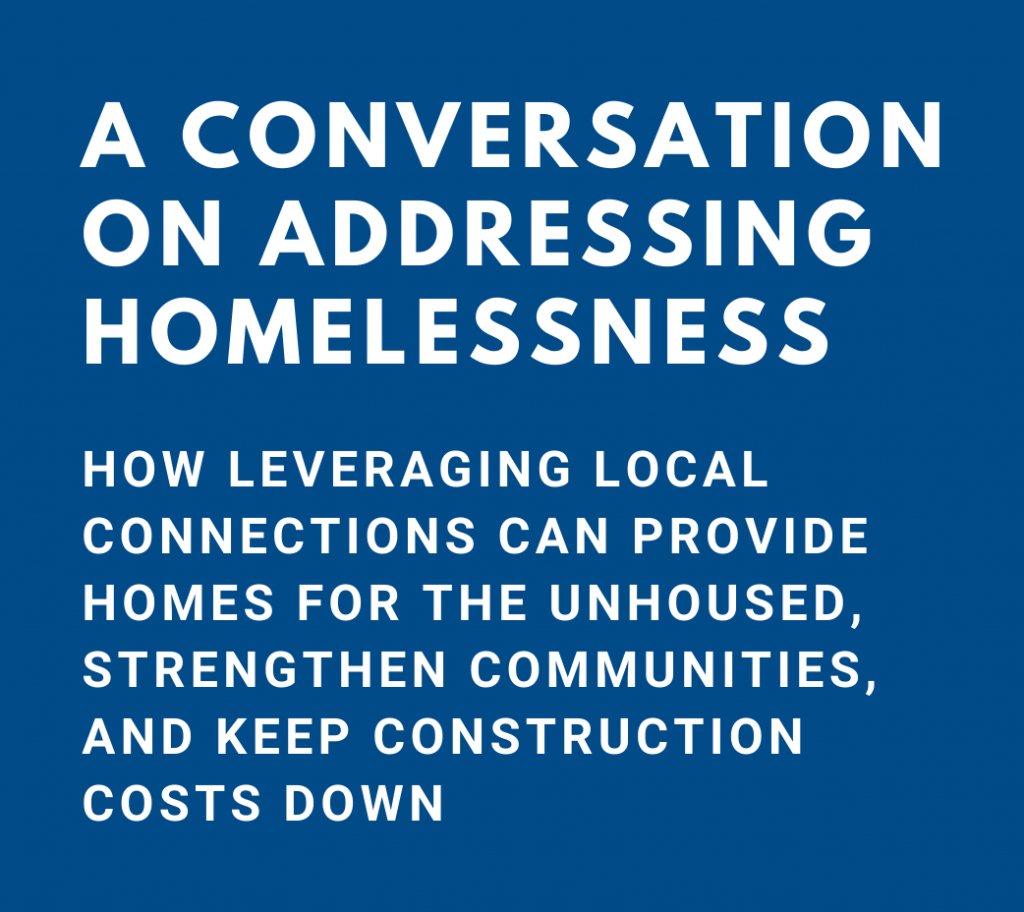
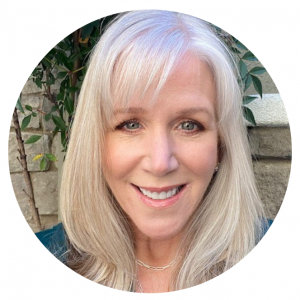
Crisand Giles, Executive Director

Background
Earlier this year, we had the pleasure of meeting with Crisand Giles, HomeAid Northern California‘s new Executive Director. Before taking on this role in August 2021, Crisand worked as a housing advocate and forward planner for several homebuilding companies. She also ran HomeAid Sacramento and served the North State Building Industry Association in the Sacramento region.
Thanks to their expertise in homebuilding and relationships with contractors, HomeAid is typically able to reduce project costs by 50-85%. Over the last 22 years, the Northern California branch in particular has provided homes for more than 12,000 unhoused individuals in the Bay Area.
Their current projects include a micro-homes initiative, where they work with faith-based communities to convert parking lots into living spaces, and a 114-bed construction project for women and children in downtown Richmond. In addition to home-building, they also partner with care providers to offer services that help new residents get into affordable or market-rate housing.
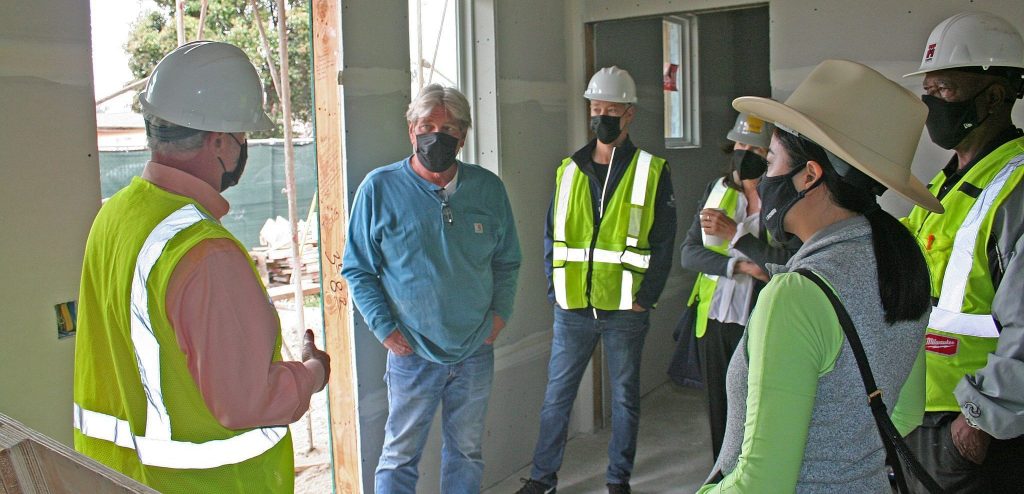
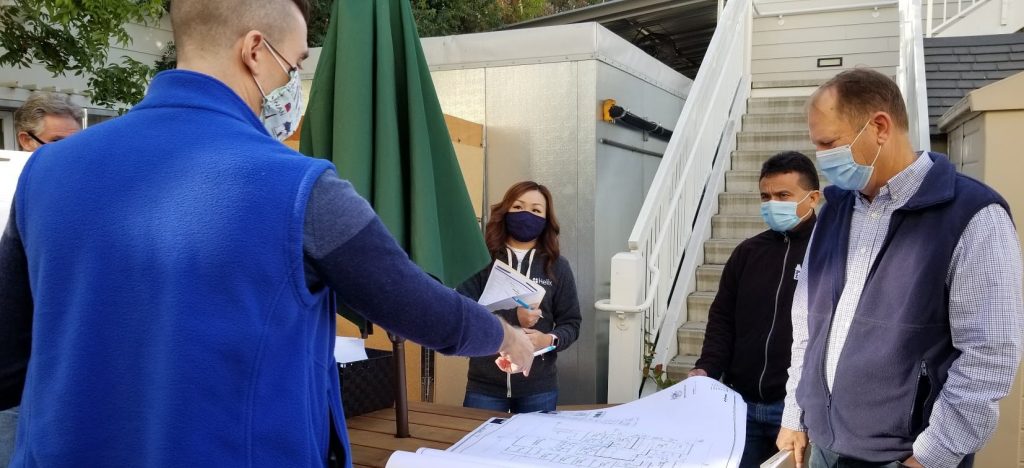
Top: Team tour at the Bridge of Hope project. Bottom: Kick-off meeting for the West Valley Community Services food pantry addition in Cupertino.
Q&A with Crisand
Responses have been lightly edited for clarity.
You only recently stepped into your new role at HomeAid Northern California. How has your career trajectory prepared you for this new position?
My past experiences have served me well in this role. I often tap into skills I gained as a forward planner, where I was responsible for getting projects approved, and I am able to leverage the relationships I built with different contractors during my time with HomeAid Sacramento. It is hard to get anything approved in California, but if you are doing it for all the right reasons and your passion comes through, you will find that jurisdictions really do want to partner with you on these issues.
Communities everywhere are facing a complex web of issues, including climate change, social inequity, and housing affordability crises. How do you see HomeAid operating at the intersection of these issues?
Working with the faith-based community has given HomeAid the opportunity to build micro-housing units for individuals and small families. You can’t have too many people in a home that size, but the housing is always located near schools, shopping areas, established neighborhoods, and the faith-based community partnering on the project. This provides a healthy environment for someone to get their footing and find a permanent housing solution—especially compared to traditional shelters, which are usually located on the outskirts of the community or in more industrialized areas.
The close proximity to services also reduces travel emissions, and because we build on existing infrastructure, we’re able to keep costs down and avoid finding additional land and resources.
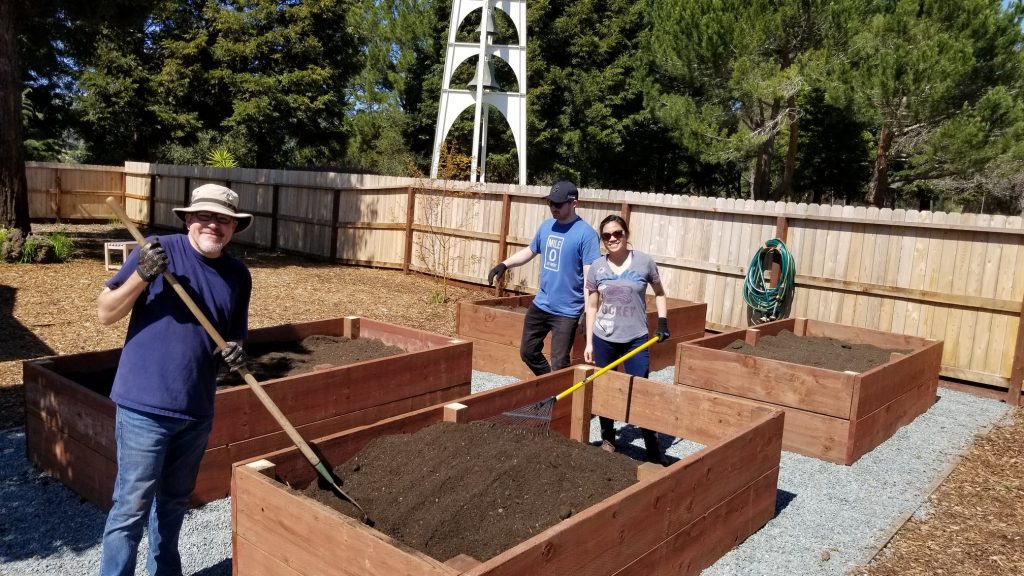
Volunteers participating in a planting day.
The housing is always located near schools, shopping areas, established neighborhoods, and the faith-based community supporting the project. This provides a healthy environment for someone to get their footing and find a permanent housing solution.
Crisand Giles, HomeAid Northern California Tweet
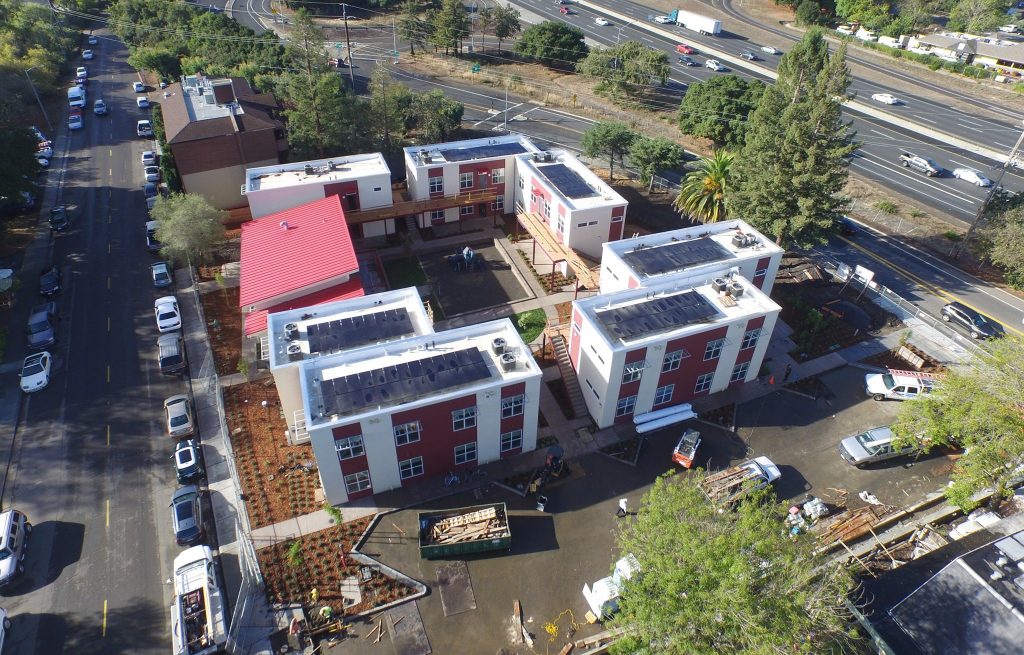
A completed multi-unit shelter.
What sort of multifaceted approach is needed to address homelessness? Can you speak to some of the major barriers and opportunities around this approach?
It has to become faster, cheaper and easier to build housing of any type in California. There have been a few recent changes in housing policy that are advancing these goals. The accessory dwelling unit (ADU) legislation that allows individuals to put housing in their own backyards is a good first step because it opens up additional housing for the overall population. We see that as something we can really build on. Reduced parking requirements for housing also allow us to convert components of parking lots into housing without having to create new parking areas.
Additionally, we are encouraged by subsidized housing programs, like Homekey, that use federal funding to reduce the overall cost per housing unit for homeless people. We have seen some jurisdictions really pave the way and expedite the approval process because of their commitment to eradicating homelessness. This is something that is critical to even begin to meet the needs of the population we are trying to serve.
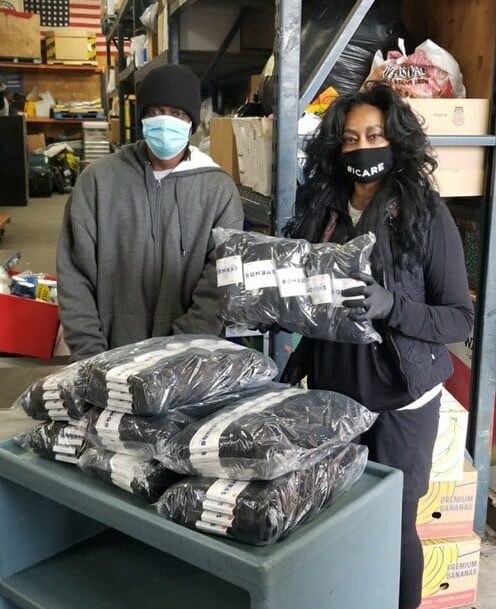
Volunteers holding socks donated by Bombas for a clothes drive in Richmond.
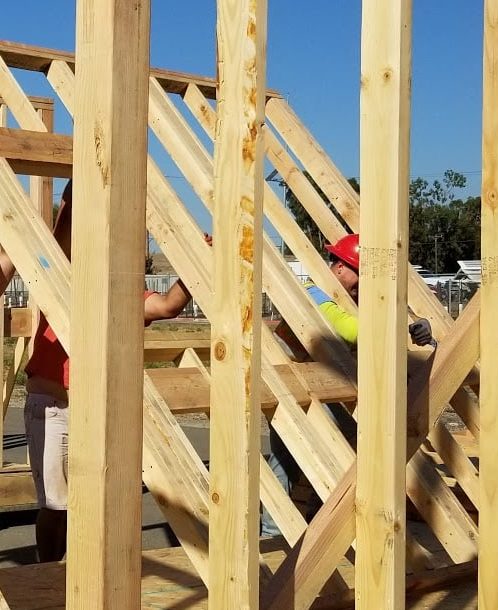
Contractors at work on the Hayward Tiny Homes project.

Photo from the 2020 Toy Drive for children at Shepherd’s Gate.
Have you noticed any opportunities for peer learning through your work?
In our projects—especially when we are building micro-homes—we try to make the environment as dynamic as possible. This often means including common areas where people can congregate, but there are other factors we consider, like age balance. For example, we proposed one of our projects in Walnut Creek to be age-restricted for seniors, and some of the key feedback we got from the neighbors right away was that a mix of populations would be better. You need some young people to help the older people with physical things that they can’t do anymore, like reaching a certain light bulb. And these younger people also need older folks nearby who can help them with generational learning, job applications, social skills, and other things they may have enough experience with.
Given the presence of NIMBY-ism, providing housing that is affordable and available to homeless people must face pushback from the community and neighborhood. How does your team resolve misconceptions?
We meet with local families and address their concerns and fears head on. We explain that there are several different levels to becoming homeless, and that most of the people we serve with this type of housing commonly have a job. Some have more than one. They just cannot afford housing in the Bay Area, and need social services and some bandwidth to help them get back into affordable or market-rate housing.
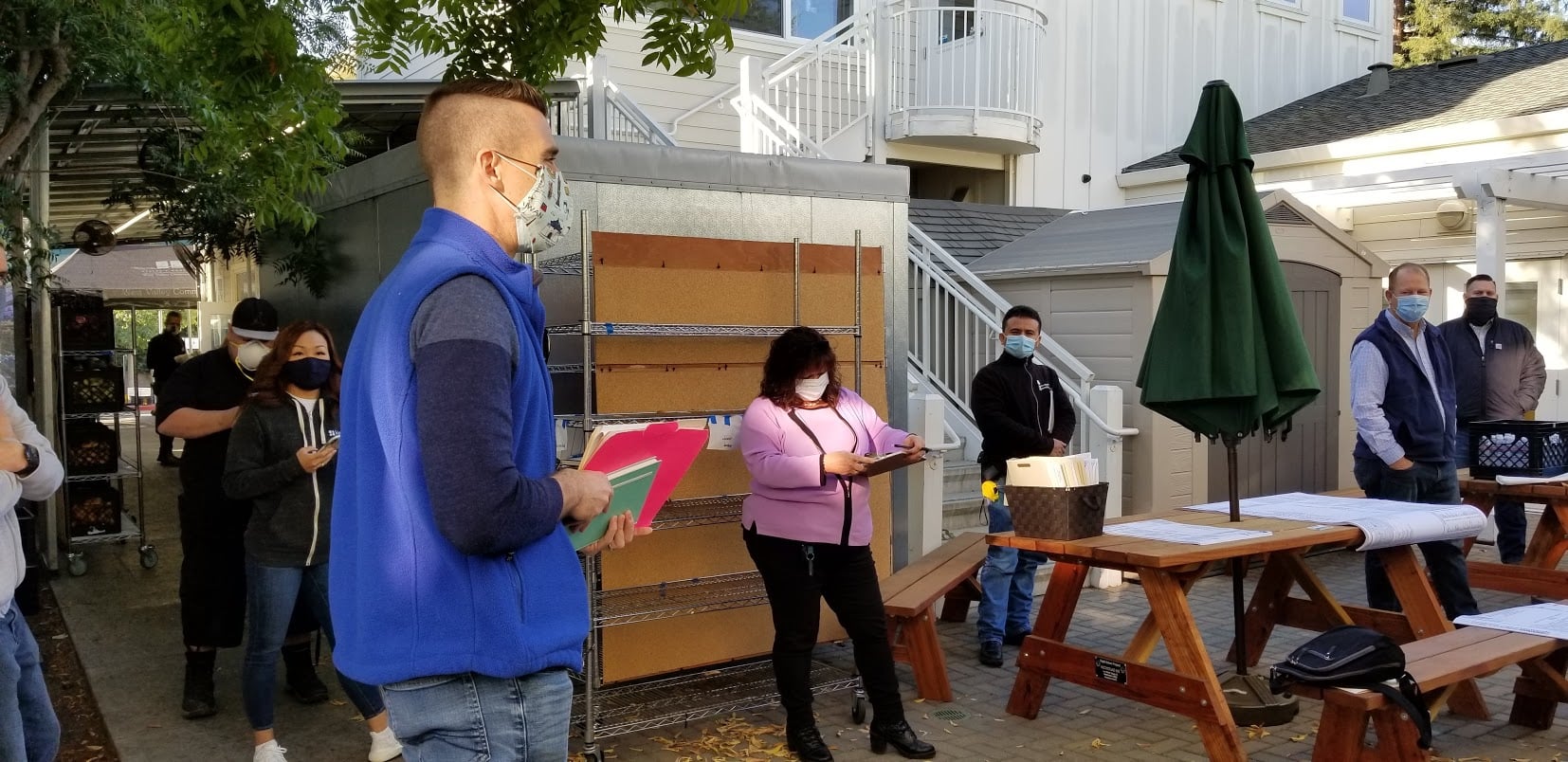
Having homeless people housed, cared for, and given the services and support they need is a win for the church, local building trades, and broader community—it creates a real feeling of synergy for the overall jurisdiction.
Crisand Giles, HomeAid Northern California Tweet
How might the term “regenerative” apply to your work?
I would consider our parking lot conversations to be regenerative. We build all-electric micro-units on infrastructure that’s already in place, so the building has a smaller footprint, and the construction of the units only disrupts land and resources that have already been paved over. In fact, by softening with landscaping and providing opportunities for gathering, we are creating more opportunity for water infiltration and life in a space that normally would have been paved-over blacktop.
Working with existing infrastructure poses unique issues, and can sometimes add project cost. But having homeless people housed, cared for, and given the services and support they need is a win for the church, local building trades, and broader community—it creates a real feeling of synergy for the overall jurisdiction. I would love to see more under-utilized properties and spaces converted to housing, whether it is for homeless people or other populations that need broader and more affordable housing solutions.
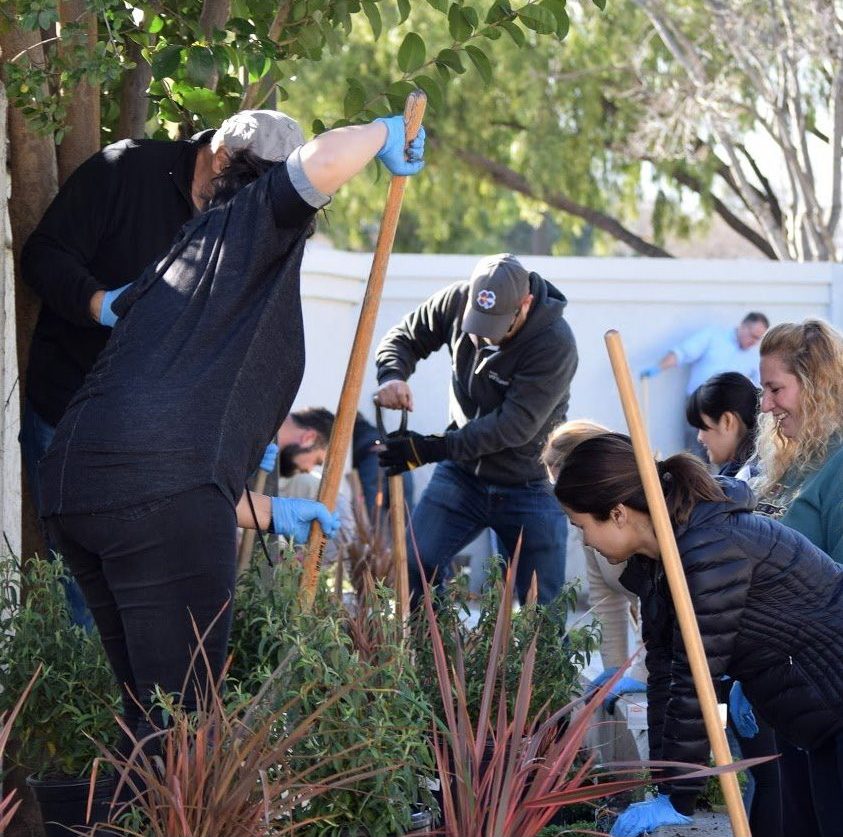
Photo from a volunteer landscaping day.
Over time, [our communities] will evolve and become more dense. It’s important to recognize that these changes bring opportunities to mentor people and create relationships that may not have existed otherwise.
Crisand Giles, HomeAid Northern California Tweet
Do you have a favorite story that illustrates some of the broader social and environmental impacts of your work?
One of my favorite projects that I got to work on was with St. John’s Program for Real Change in Sacramento. The program helps homeless women get their lives back in order and become self-sufficient through employment, access to mental health resources, and the establishment of credit. We built eleven ADUs for the program graduates, and watching them move their families into their own homes is the most beautiful thing you can ever see. They were so proud of the work that they had done, from reestablishing credit to developing all the skills they needed to support themselves and, in some cases, regaining custody of their children.
What advice do you have for people who want to do similar work?
The relationships that you have with the local jurisdictions are key. A great first step is to learn what your local politics are, who is on your city council, and whether or not they are working on any of these issues. It is also important to work through other people that are saying yes to development at all levels, like the California YIMBY group. But the biggest thing we all need to do is not be so afraid of change in our own communities. Over time, they will evolve and become more dense. For some, that is a really frightening thing. But it is important to recognize that these changes bring great opportunities to mentor people and create relationships that may not have existed otherwise.
How can someone support HomeAid's work?
Follow them on social media to learn about events and care projects
Volunteer activities include anything from landscaping to care package assembly.
HomeAid is always looking for individuals with experience in the entitlement process or preliminary design. Reach out to them here.
Reach out to HomeAid Northern California or connect with your local HomeAid chapter.
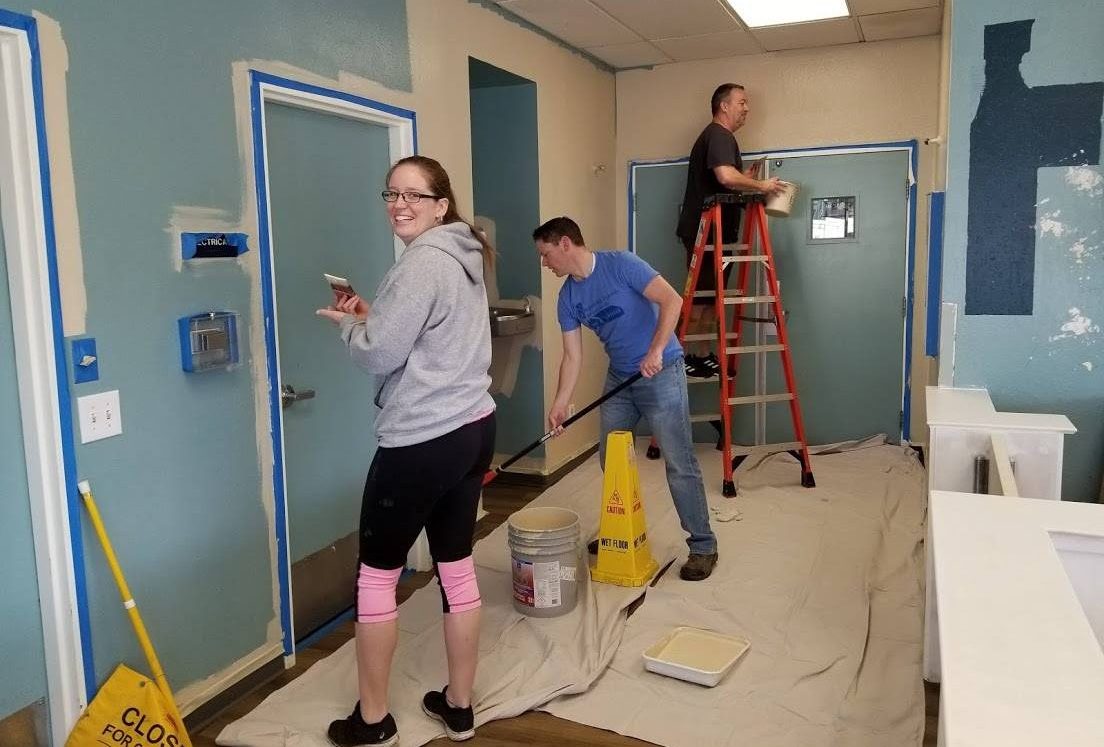
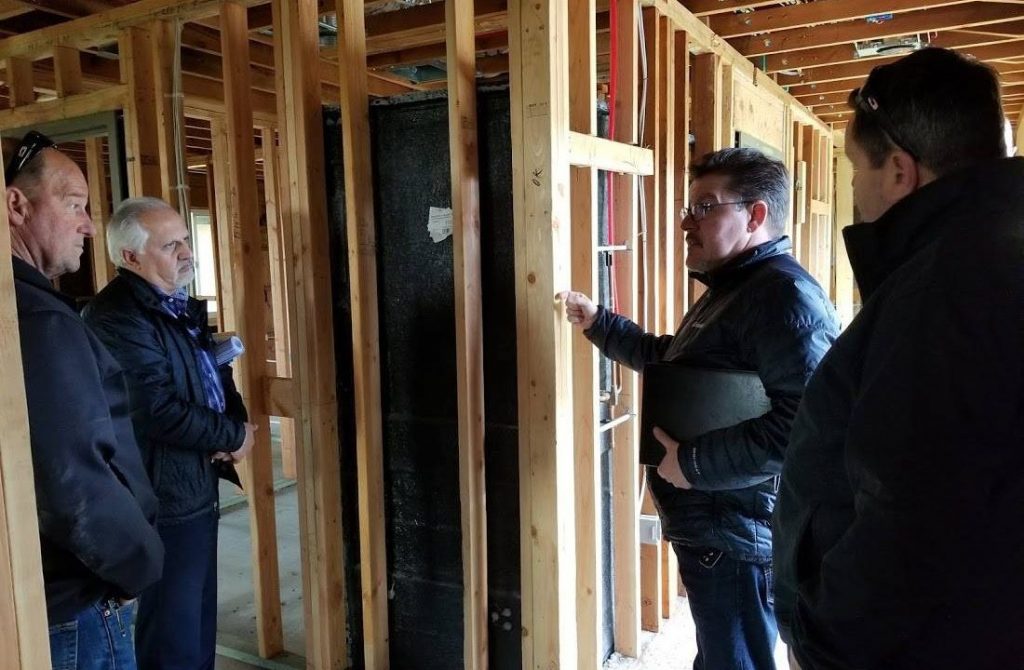
Top: Volunteers working at a paint day at the James Boccardo Center in San Jose. Bottom: Builders discussing the Claire’s House project.
All photos used in this feature are courtesy of HomeAid Northern California’s social media pages.


